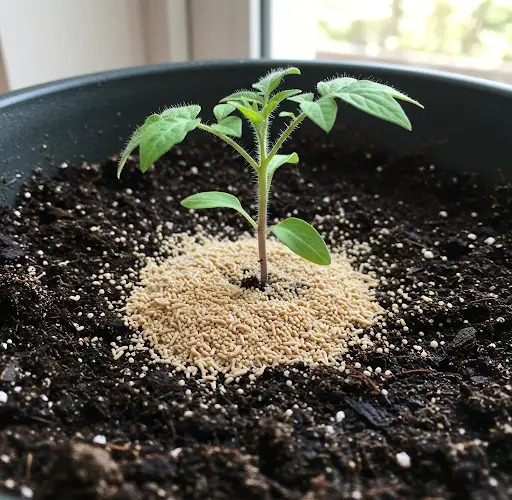Tomato seedlings sometimes fail to grow or grow more slowly than expected, leaving gardeners frustrated. Several factors can contribute to this issue, including insufficient light, suboptimal temperature, and a lack of proper nutrients. To successfully transplant tomato seedlings outdoors, they must reach the appropriate height and strength. Ensuring their healthy development requires understanding and addressing these growth barriers.
One of the most crucial factors in promoting the growth of tomato seedlings is light. Without adequate light, seedlings become weak and spindly, struggling to develop strong stems and healthy leaves. Ideally, seedlings should receive at least 12 to 16 hours of direct or supplemental light daily. When natural light is insufficient, using grow lights can provide the necessary boost. Positioning the seedlings near a well-lit window can also help, but care must be taken to prevent exposure to excessive cold, as fluctuating temperatures can stunt growth.
Temperature plays a significant role in seedling development. Tomato plants thrive in warm conditions, and if the temperature is too low, their growth slows dramatically. The optimal temperature range for tomato seedlings is between 65°F and 75°F (18°C to 24°C). If kept in a colder environment, such as an unheated room, seedlings will take longer to develop. Using heating mats or covering them with protective plastic can help maintain the required warmth and promote growth.
To enhance seedling growth, I experimented with a simple yet effective technique: using plastic bottles as miniature greenhouses. The results were impressive. By cutting plastic bottles to an appropriate size and placing them over individual seedlings, I created a warm and protected environment. Within just a few days, the covered seedlings showed significant improvement compared to the uncovered ones. This method traps warmth and moisture, fostering an ideal microclimate that accelerates growth. I now use this technique for all my tomato seedlings, ensuring they develop quickly and are ready for transplanting when the time comes.
Another effective way to encourage faster seedling growth is through proper feeding. However, not all fertilizers or feeding methods yield the same results. Through trial and research, I discovered a natural solution that significantly enhances the growth and health of tomato seedlings: a homemade nutrient mixture made from yeast, milk, sugar, and water.
To prepare this nutrient-rich solution, follow these simple steps:
- Pour 10 grams of dry yeast into a jug or container.
- Add 100 milliliters of milk.
- Stir in one tablespoon of sugar.
- Mix well until the yeast and sugar dissolve completely.
- Add one liter of water to dilute the mixture.
Once prepared, this solution should be used only once before transplanting the seedlings outdoors. Watering the seedlings with this mixture strengthens their growth and enhances their resistance to diseases and pests. The key ingredients each play an important role in plant health. Yeast, which helps dough rise in baking, promotes plant growth by releasing beneficial compounds that stimulate root and stem development. Milk provides essential nutrients, such as calcium, which supports strong cell structure and prevents issues like blossom-end rot. Additionally, milk has antifungal properties that can help protect young plants from diseases. Sugar serves as an energy source for beneficial soil microbes while also repelling certain pests.
Combining these methods—providing adequate light, maintaining optimal temperature, using plastic bottle covers, and feeding seedlings with a natural growth solution—can significantly improve the success of growing tomato seedlings. Healthy, well-developed seedlings have a better chance of thriving when transplanted outdoors, leading to a more productive harvest.
Tomato cultivation requires attention to detail and a proactive approach to overcoming challenges. By implementing these strategies, gardeners can ensure their seedlings grow robustly, ready to produce an abundant yield. Whether using natural feeding solutions or innovative protective methods, a little effort in the early stages can make a substantial difference in the overall health and productivity of tomato plants.



